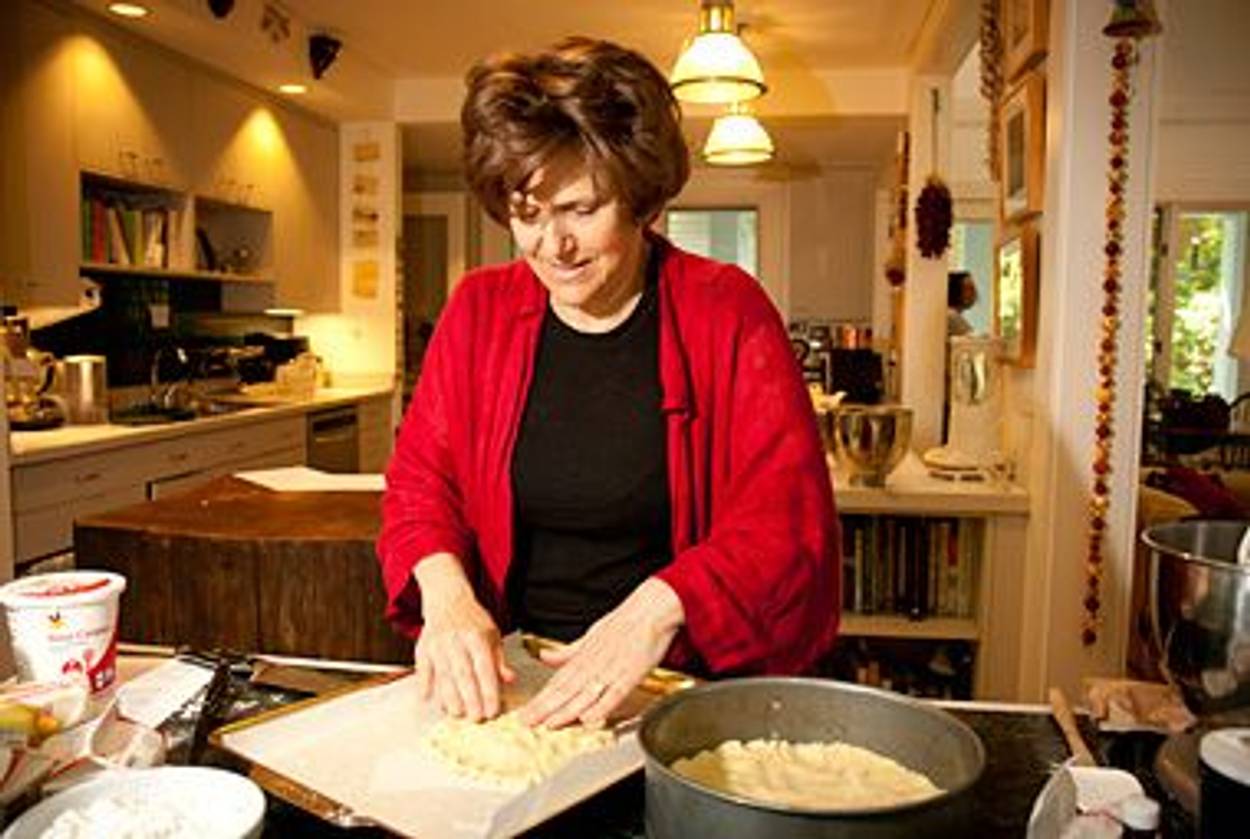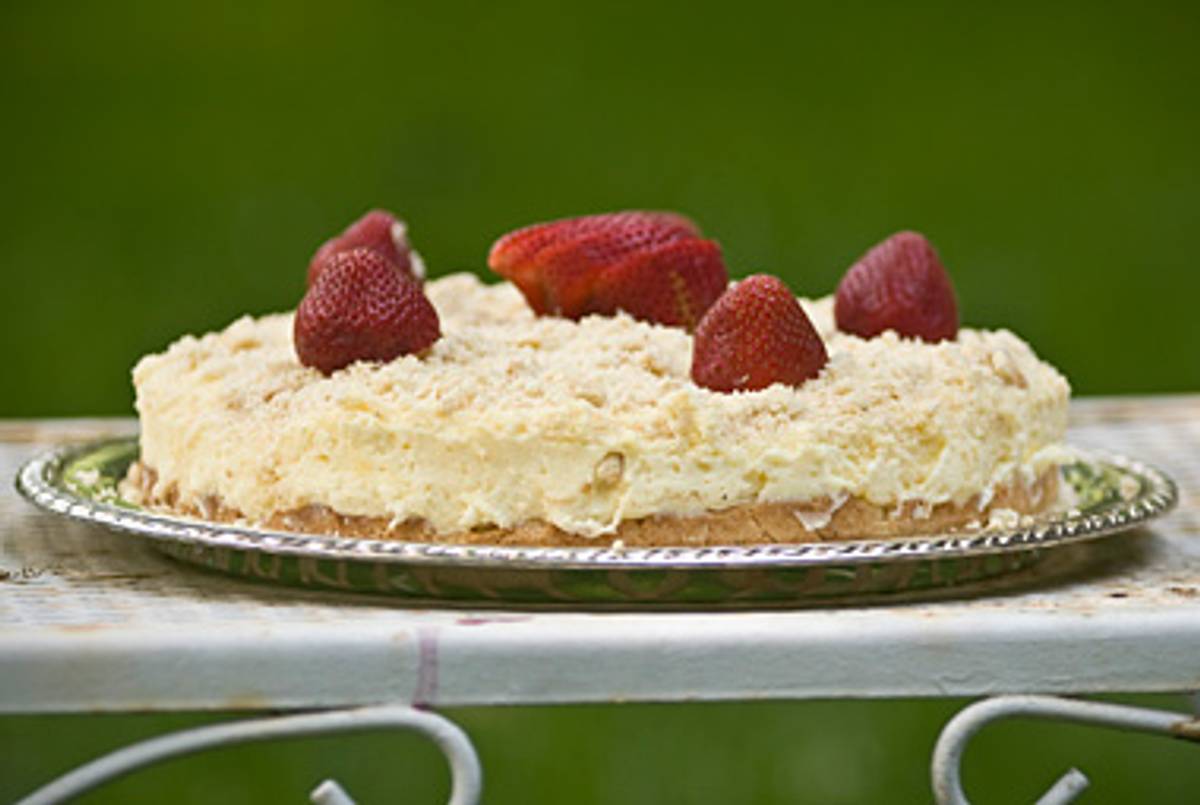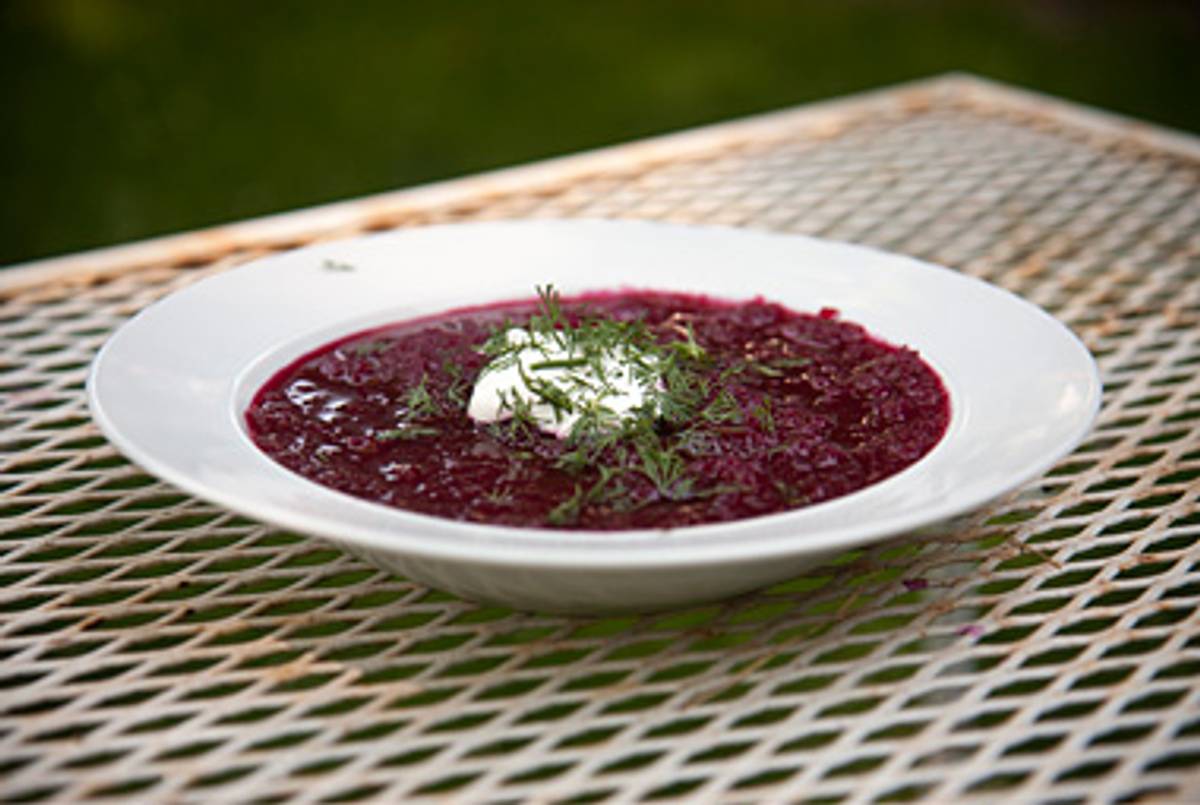Dairy Heirs
Shavuot and cheese, past and present




For as long as I have been writing about food I have thought about the cycles of the Jewish year and how seasonality impacts what Jews have traditionally eaten. After all, before globalism, before localism, before organic, before refrigeration, before the microwave, we all had to live by the seasons.
Shavuot, known as the Festival of Weeks, Festival of the First Fruits, and the Festival of the Giving of the Torah, is the best example of a holiday in sync with the season. Originally a harvest holiday celebrating the barley crop, Shavuot arrives exactly seven weeks after Passover and in time came to be closely associated with dairy, not wheat.
A period of rebirth, spring, when Shavuot falls, is both when lambs and goats are born and when new barley is planted. During the spring months, the earth is green, even in the desert, and the animals feed on wheat, grass, and weeds, which are key to their producing milk, later used to make butter and cheese. For that reason, butter churning and cheese making have become common elements at spring harvest festivals the world over.
Of course, in ancient Israel and in Bedouin tribes and many Arab villages today, cheese is made from sour milk. It’s put through cheesecloth, the whey molded into balls, and preserved for the winter by salting and drying in the sun for future rehydration when needed. The invention and adoption of refrigeration has rendered this traditional method of making cheese obsolete.
Beyond its pastoral ties, Shavuot also has a religious anchor. We know it as a commemoration of the giving of the Ten Commandments on Mount Sinai. In modern America, it became known too as the time at which Conservative and Reform synagogues held Confirmation ceremonies for teenagers who continued and then concluded their religious education after their bar and bat mitzvahs.
As for Mount Sinai, it’s known by other names: Mountain of God, mountain of Bashan, and mountain of peaks (Har Gavnunim) all mentioned in the 68th psalm. Gavnunim means “gibbous, many-peaked,” but the word has the same root as g’vinah, meaning cheese. Accordingly, cheese consumption at this time of year is a reminder of the giving of the Law. And, throughout the Bible, Israel is repeatedly referred to as the land of milk and honey.
In recent years, Americans have discovered artisanal cheeses in a big way. At least 300 boutique cheese makers are currently at work in North America. In December, I spoke at a conference sponsored by the Jewish environmental group Hazon in Monterey, California. There I met Abbe Turner, a boutique cheese maker from Kent, Ohio, an hour from Cleveland. To make one batch of kosher feta a week for her Lucky Penny Creamery, Turner orders her kosher vegetable rennet from Danisco in France. “The kosher market is underserved,” she told me. “Everybody has the right to kosher cheese. In the spring there is a lot more milk because of kidding. Following the tenets of Judaism and farming, we farm in a way to keep the soil and water healthy. If I stick to that tenet I am doing what I should be doing.”
Turner is one of a handful of Jewish cheese makers in the United States. Alan Glustoff, a food chemist, produces 5 Spoke Creamery cows milk cheese in Rye Brook, New York. The creamery is especially known for its Tumblewood cheese, a creamy cross between a cantal and a cheddar. Like Turner, Glustoff has a run of kosher packaged cheeses. “Shavuot and the holidays come to mind for me,” he says, explaining that the holiday’s link to dairy is one of the reasons he makes cheese. “Spring is a time of rebirth for me personally. At that time the pasturelands are green enough for cows to graze on, the milk is sweeter and there is more of it. Holidays like Shavuot really define what’s going on, with the counting of the omer getting to a higher stage. How much of a Jewish ethic all this is—looking at changes in temperature, changes in growth, which we can see on a daily basis. I appreciate that wonder.”
You don’t have to be a cheese maker to recognize the connection between cheese and spring. Nigel Savage, Hazon’s founder, ponders the cycle of the Jewish year symbolically. “This new generation of Jewish farmers is helping us to reconnect to the traditions in new ways,” he told me over coffee at Aroma Café in New York. “The world is a commentary on the Torah. Shavuot is an opportunity to think about our milk products in a new way. ”

Israeli Cheesecake
Adapted from Vered Guttman
Crust:
2 3/4 cups all-purpose flour
1/2 teaspoon baking powder
Pinch of salt
15 tablespoons unsalted butter
1/2 cup sugar
1 large egg
Zest of 1 lemon
Preheat the oven to 350 degrees. Line a baking sheet with parchment paper and grease a 10-inch spring form pan. Put the flour, baking powder, pinch of salt, butter, and sugar in a standing mixer equipped with paddle. Add the egg and lemon zest and mix on low speed until crumbs form.
Pat 3/4 of the dough into the prepared spring form pan and flatten the rest onto a baking sheet. Bake both for about 20 minutes or until fully cooked and golden around the edges. Let cool completely.
Cheese filling:
2 cups heavy cream
7 tablespoons sugar
1/2 (5.1 ounce) packet instant vanilla pudding
1/4 cup milk
1 pound Israeli soft white cheese (can be purchased at kosher markets and many grocery stores under the Norman label), crème fraîche, or half sour cream and half cream cheese
1 pint fresh strawberries
Using a standing mixer equipped with the beater, whip the cream and sugar. In a separate bowl, sprinkle the pudding packet into the milk and mix. Add this mixture to the whipped cream. Then blend in the cheese. Fill the spring form pan with the contents of the bowl.
Crumble the baked dough from the baking sheet on top of the filling. Refrigerate 24 hours and serve garnished with strawberries.
Yield : About 10 servings.

French Cold Beet Soup (aka Borscht)
Adapted from the forthcoming Quiches, Kugels, and Couscous: My Search for Jewish Cooking in France by Joan Nathan (Knopf, November 2, 2010)
2 pounds raw beets (about 4)
1 pound onions (2 medium)
2 cloves garlic, peeled and left whole
1 tablespoon sugar
Salt and freshly ground pepper to taste
3 tablespoons balsamic vinegar
½ cup sour cream, crème fraîche, or good yogurt
4 tablespoons fresh dill, chervil, or mint cut in chiffonade
Peel the beets and the onions. Cut them in chunks and toss them together in a large soup pot. Pour in about 2 quarts of water or enough to cover the vegetables by an inch or so.
Add the garlic, sugar, salt, and freshly ground pepper to taste. Bring to a boil, skimming the surface of any impurities that rise. Lower the heat, cover, and simmer for about an hour or until the beets are cooked.
When the soup cools, ladle the vegetables and some of their broth with the vinegar into a blender and purée until the consistency of a thick soup. Adjust the thickness and seasoning of the soup to your taste, adding the reserved beet broth if you want a thinner soup.
Serve cold in soup bowls with a dollop of the sour cream, crème fraîche, or yogurt and a sprinkle of the dill, chervil, or mint.
Yield: 6 to 8 servings
Joan Nathan is Tablet Magazine’s food columnist and the author of 10 cookbooks including King Solomon’s Table: a Culinary Exploration of Jewish Cooking from Around the World.